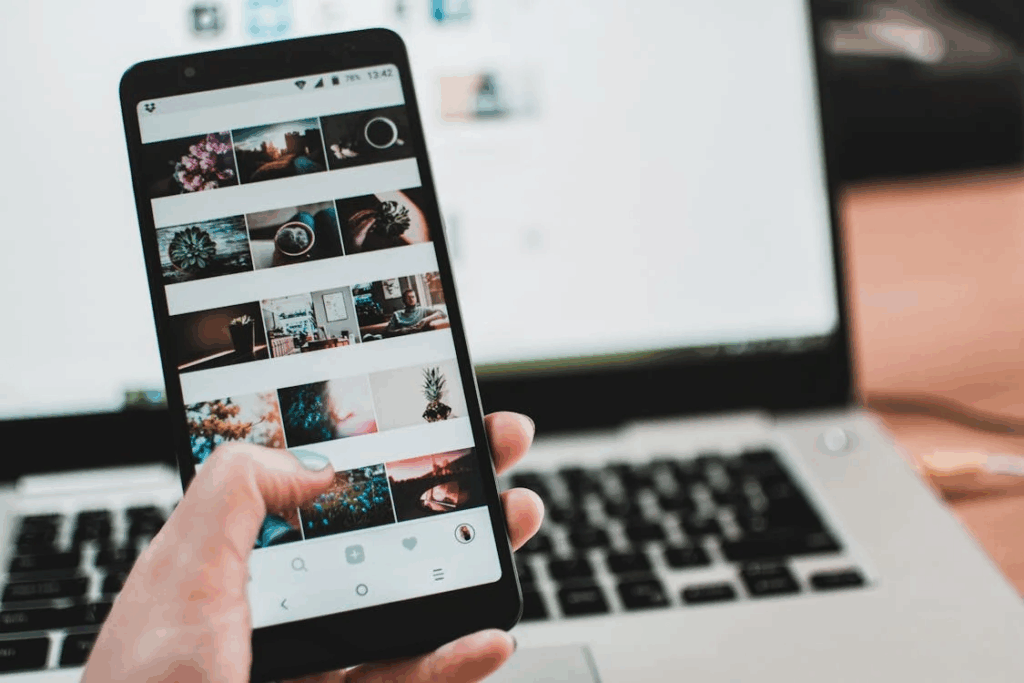The Ethics of AI-Driven Design
8. The Ethics of AI-Driven Design

As AI continues to shape the future of design from illustrations and animations to industrial products and video content, it also raises complex questions about ownership, fairness, and responsibility. While these tools unlock new creative frontiers, they also demand careful reflection on how we use them, who benefits from them, and what values we encode into the algorithms guiding them.
Design powered by AI is not just about speed and aesthetics. It’s about the cultural, legal, and ethical frameworks that ensure creativity remains inclusive, respectful, and accountable in a world increasingly built by code.
As featured in Section 8.5 of June HonestAI, the Global AI Ethics Summit brought the world together in Seoul, uniting policymakers, researchers, and industry leaders to shape the future of responsible artificial intelligence.
Table of Contents
8.1 Ownership and Intellectual Property: Who Owns AI-Generated Work?
One of the most pressing concerns in AI-driven design is the question of ownership. If an artist or designer generates a concept using a text-to-image or text-to-video tool, who owns the result? The human? The platform? The model’s creators? Or no one at all?
AI-generated content often blurs the lines of authorship. Many of these models are trained on vast data sets that include copyrighted material—raising legal and moral dilemmas about derivative work. In jurisdictions like the United States, copyright law generally protects works created by humans, not machines. But as tools grow more sophisticated, this boundary is becoming increasingly difficult to define.
Can creators claim exclusive rights to content co-created with AI?
In most legal systems today, including the United States and the UK, copyright protection applies only to works created by humans. This means that if a piece of content is entirely generated by AI without significant human input, it is typically not protected by copyright law. However, when a human exercises meaningful creative control—through prompt crafting, editing, and contextualization—they may be able to claim ownership of the final product, especially if the AI acts as a tool rather than the author.
Should platforms disclose how and where training data was sourced?
Yes, transparency around training data is increasingly seen as an ethical and legal necessity. When models are trained on copyrighted works, sensitive material, or biased datasets without consent, it raises both legal and moral concerns. Many in the design and tech communities are now advocating for open-source training disclosures, licensing agreements for commercial data usage, and improved dataset documentation to help creators make informed choices about the tools they use.
How do we prevent AI-generated content from infringing on existing works?
Preventing infringement requires a multi-pronged approach. AI platforms must implement content filtering systems that recognize and block close replicas of known copyrighted works. Additionally, embedding watermarking or metadata tracking into AI-generated content can help distinguish it from human-made material. On the user side, designers and businesses must take responsibility by using AI ethically, avoiding prompts or workflows that intentionally mimic or plagiarize existing intellectual property.

8.2 Bias and Representation: What Are We Teaching Our Tools?
AI tools are only as objective as the data they’re trained on. If the data sets used to train models lack diversity, whether in terms of race, gender, culture, geography, or language,the resulting outputs will reflect and reinforce those gaps.
This is particularly problematic in design, where visual representation plays a central role. A generative model that defaults to Western-centric, male, or Euro centric imagery perpetuates narrow worldviews, even unintentionally. These biases don’t just limit aesthetic diversity; they can alienate or misrepresent entire groups of people.
Examples of ethical challenges:
AI-generated images showing stereotypical roles for certain genders or ethnicity
Models that produce inconsistent or inaccurate results for non-Western cultural symbols
Training data that overlooks voices from underrepresented communities
Ethical design demands proactive questioning of what’s included—and excluded—in the data sets we rely on.
8.3 Responsibility and Impact: Designing for a Global, Inclusive Audience
As designers hand over more of the creative process to machines, the responsibility to design ethically doesn’t disappear—it grows. The decisions made during model development, data curation, prompt creation, and even user interface design all shape the cultural and social impact of the final product.
Ethical AI design is not only about avoiding harm. It’s about actively creating systems that are inclusive, accessible, and representative of the global audience they serve.
Best practices to promote ethical design include:
Auditing datasets for diversity and transparency
Involving multidisciplinary teams in AI development
Encouraging community feedback and participation
Building fail-safes to detect and reduce bias
AI doesn’t have morals or values—people do. It’s up to designers, developers, and creative teams to ensure that those values guide the systems they build and the content they create.
AI is transforming the design landscape—but with that transformation comes a responsibility to think critically, act intentionally, and design ethically. Ownership must be clarified. Bias must be confronted. And responsibility must be shared by everyone involved in the creative process.
As we embrace the power of AI in shaping culture, communication, and commerce, we must also ensure that these tools uplift rather than marginalize, represent rather than reduce, and empower rather than exploit. Ethical design isn’t a limitation—it’s a framework for lasting, inclusive innovation.
8.4 — The Ethics of AI-Driven Design: Ownership, Bias, and Responsibility
1. Introduction: Why Ethical Design Matters in the Age of AI
“Ethical AI” and “Responsible AI” are frequently discussed in tech and policy circles, but definitions often vary based on provider agendas or capabilities. To ground the conversation, consider a working definition:
Ethics is a set of principles aligned with natural law—doing good to others as we expect them to do good to us, while actively preventing harm, whether intended or accidental.
When applied to AI, ethics becomes a question of the role AI is asked to play—whether as a tool, advisor, collaborator, or orchestrator. Each role brings new responsibilities and ethical considerations.
2. Ownership of AI-Generated Content
Accountability in an Era of Machine Collaboration
AI can take on various roles in content creation and decision-making, each with its own implications:
AI as a Tactical Tool: Like a 1950s pocket calculator, it helps process large data sets. Harms here are easier to control.
AI with Decision-Making Capability: AI follows human-defined guidelines but can be affected by bias or data drift.
AI in Collaborative Ecosystems: When AI becomes part of a team, decisions made may influence business outcomes and branding, necessitating safeguards and shared accountability.
AI as Orchestrator of Hybrid Teams: In advanced scenarios—like AI managing airport control—AI may lead mixed human-digital teams. Here, errors could be high-stakes, requiring constant human oversight (a “man-in-the-middle” approach).
The Content Creation Dilemma
When AI generates content such as reports, code, or medical recommendations, the question becomes: Who is accountable for the outcomes? In most legal systems, AI lacks person-hood and cannot be held liable, so responsibility defaults to the deploying organization.
Levels of Independence
Currently, AI operates within the limits of Artificial Narrow Intelligence (ANI), meaning final responsibility lies with the reviewing human. As we move toward more autonomous systems (AGI), the legal and ethical frameworks must evolve. But legal liability will likely remain human-owned for the future.
3. AI and Software Development
When developers use AI tools to generate or debug code, ownership and responsibility depend on the level of human involvement:
As a Debugging Assistant: The developer remains the author.
As a Code Generator: The line blurs. Questions arise—who owns the code, and who is liable for its behavior?
These concerns are not hypothetical. Legal cases involving AI-generated artwork and LLMs trained on copyrighted data have already emerged, indicating the need for clear usage guidelines.
Emerging Best Practices
Ensure legal data sourcing for AI training
Establish review processes for AI-generated code
Monitor for hallucinations or unintentional functionality
4. Cultural Context: The Limits of AI Understanding
AI cannot fully replace human judgment, especially in culturally sensitive contexts. Consider this analogy from Denzel Washington:
“It’s not a color issue; it’s a cultural issue… Each [director] brings cultural understanding.”
AI, no matter how advanced, lacks this intrinsic cultural awareness. Misrepresentations in AI-generated outputs can arise not from malice but from limitations in training data. This is especially important in design, development, and media applications where nuance matters.
5. Bias and Representation in AI Systems
Bias is not static; it evolves with geography, culture, and time. Currently, at least 10 countries have enacted national-level AI governance laws (e.g., EU, US, China, Brazil), and several technical standards have been introduced (ISO, IEEE, etc.).
Dynamic Nature of Bias
Bias can be introduced through:
Community values and cultural context
Solution expansion into new geographies
User interaction and model drift
Case Example: Historical Representation
In 2024, an AI-generated image of the Founding Fathers—intended to be inclusive—sparked controversy. In response, policies were adjusted to reflect historical accuracy in such prompts. This illustrates how bias mitigation requires both foresight and adaptive policies.
6. Responsibility and Risk Management
Designing ethical AI systems isn’t just about initial safeguards. It involves ongoing human oversight throughout the AI lifecycle.
Real-World Drift Examples
Medical AI: A system flags annotated X-rays as always positive, learning from annotations rather than the actual images—creating a biased feedback loop.
Smart Cities: AI reclassifies a city as a swamp after a series of extreme weather events, showcasing contextual drift.
These examples demonstrate that AI can learn incorrectly from its environment, making robust feedback mechanisms essential.
7. The Path Forward: Designing AI with Human Oversight
As AI becomes more advanced—from assistant to co-pilot to team leader—it must be governed by ethical principles just as humans are.
Key Skills Needed
Detecting and mitigating data bias
Writing quality prompts
Managing hallucinations
Applying AI guardrails
Governance Essentials
Clearly defined ownership of AI outputs
Continuous monitoring with human-in-the-loop models
Adaptation of ethical practices across sectors and geographies
As AI evolves, ethical design must keep pace. In the words of Geoffrey Hinton:
“Try to do things that help people rather than harm them.”
That simple mantra requires conscious design, active governance, and moral accountability—every single day.
Conclusion: Ethical Design as a Continuous Commitment
The integration of AI into creative, operational, and decision-making processes presents tremendous opportunities—but also undeniable risks. As AI systems evolve from tools to collaborators and leaders within hybrid environments, ethical design must not be treated as a checkbox. It must become a foundational pillar in every phase of AI development and deployment.
True ethical AI design demands more than just policy—it requires humility, human oversight, cultural awareness, legal clarity, and technical guardrails. Ownership, bias, and responsibility are not theoretical concerns; they shape the trust we build with users, partners, and the broader society.
The future of AI will not be defined solely by what machines can do, but by the care we take in guiding what they should do—and ensuring humans remain at the center of that journey. Let ethics not lag behind innovation, but lead it with intention and integrity.
Contributed by Jose A. Noguera
Edited and Curated by – HonestAI Editorial Team
Contributor:

Nishkam Batta
Editor-in-Chief – HonestAI Magazine
AI consultant – GrayCyan AI Solutions
Nish specializes in helping mid-size American and Canadian companies assess AI gaps and build AI strategies to help accelerate AI adoption. He also helps developing custom AI solutions and models at GrayCyan. Nish runs a program for founders to validate their App ideas and go from concept to buzz-worthy launches with traction, reach, and ROI.
Contributor:

Nishkam Batta
Editor-in-Chief - HonestAI Magazine
AI consultant - GrayCyan AI Solutions
Nish specializes in helping mid-size American and Canadian companies assess AI gaps and build AI strategies to help accelerate AI adoption. He also helps developing custom AI solutions and models at GrayCyan. Nish runs a program for founders to validate their App ideas and go from concept to buzz-worthy launches with traction, reach, and ROI.
Unlock the Future of AI -
Free Download Inside.
Get instant access to HonestAI Magazine, packed with real-world insights, expert breakdowns, and actionable strategies to help you stay ahead in the AI revolution.


